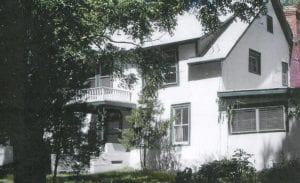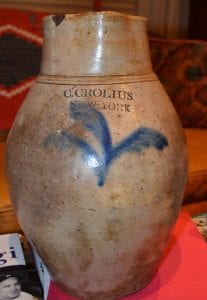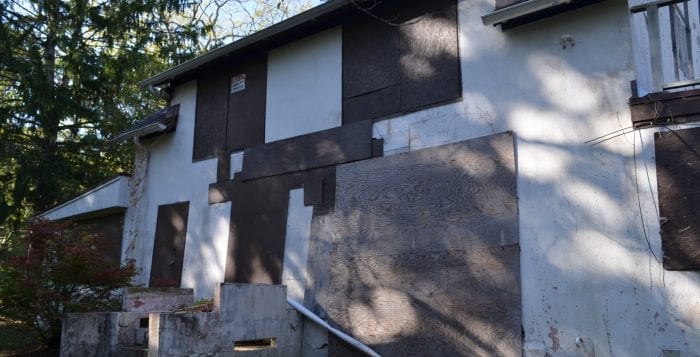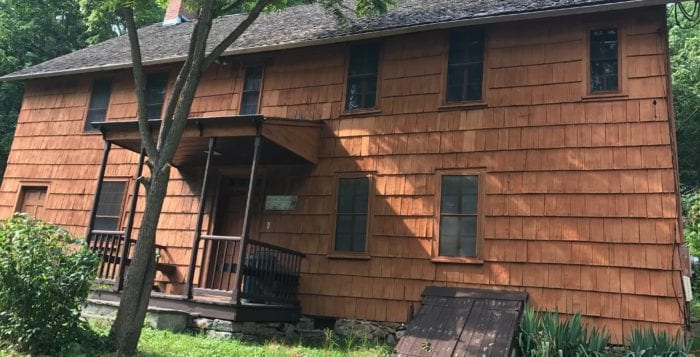Instead of selling their property to a developer for nearly $2 million, the family of Walter S. Commerdinger, Jr. sold to Suffolk County in 2006 their property on the north side of Lake Ronkonkoma with its historic home, circa 1810, for a reported $1.2 million. The idea, said Commerdinger’s heir, Paul Albert, was to turn the site into a living museum to honor the legacy of the family, regarded as one of Nesconset’s earliest settlers.
The home, which was in pristine condition when sold, has sat vacant for more than a decade now and has been repeatedly vandalized. Despite being awarded $100,000 in grant money for repairs from the Robert David Lion Gardiner Foundation, the county has allegedly not yet followed through with its end of the bargain.

Both parties aim to renegotiate the agreement.
Marie Gruick is a member of Nesconset Chamber of Commerce and she’s been helping Albert navigate the situation he’s facing with the government.
“They keep saying they’re broke,” Gruick said. “It’s been a bunch of empty promises. They just gave other communities $500,000 for a parking lot.”
The situation, though, highlights the challenges of preserving history on Long Island and in New York in general. Commerdinger Park and Marion Carll Farm, in Commack, are two examples of families hoping to preserve history with gifts of historic homes and properties to public entities. Both sites have historic homes that have fallen into a state of disrepair.
Sara Kautz is the preservation director of Preservation Long Island. The not-for-profit organization works with Long Islanders to protect, preserve, and celebrate cultural heritage through advocacy, education, and stewardship of historic sites and collections. The organization offers many services for free. She said that more and more places are at risk.
John Kennedy Jr. (R) served as Nesconset’s county legislator in 2006 and helped facilitate the initial transaction for the Commerdinger site. Kennedy now serves as county comptroller and is running for county executive. His wife Leslie Kennedy (R-Nesconset) now serves as county legislator for District 12. She said there are no new updates.
“There’s a contract that everyone is reading through, so Commerdinger can join up with Smithtown Historical Society,” Leslie Kennedy said. “But it’s all in the talk stage.”
Gruick said the park is the last green space in Nesconset and its trails stretch to Lake Ronkonkoma. If the county isn’t interested in maintaining the home, she said, they should give it back. The family formed a 501(c)3 nonprofit, W.S. Commerdinger Jr. County Park Preservation Society, in 2008 to serve as stewards for the site but have been unable to accomplish what needs to be done for the house and its buildings. They say they feel like they’re on a merry-go-round.
“How long is the county going to dangle carrots,” Gruick said.
The most immediate task, Gruick and Albert said, is to get PSEGLI to hook up the electricity to the site, so they can install security cameras to prevent further damage and to get county water hookup. What Gruick doesn’t understand, she said, is why the county is telling them that hooking up to electricity needs to go to bid if PSEGLI is the business that connects electricity.
The county said in response to our inquiries that the order is in with PSEG, which needs to schedule the work. They could not provide a time frame for electric hookup and could only say that the request has been in for a while.
Albert said that he has collections of antiques, including pottery crafted in the first kiln brought to America. He had hoped to move the pieces into the site by now. Formerly a banker, Albert said that he needs a lawyer that specializes in preservation but is unsure who has that expertise.

Kathryn Curran is the executive director of the Gardiner Foundation, a philanthropic group that supports historic preservation projects for 501(c)3 organizations with an education mission, but not for schools.
The foundation offers $5 million in grants annually and said that some projects go more smoothly than others. When a municipality owns a building, she said, they typically have a contract in place with a “friends” group to manage the property.
“The money is allocated to the friends group, not the municipality,” she said.
Because of the “friends” agreements with government, she said the group needs town approval for the work and the contracts it hopes to secure. For some reason, towns or government entities don’t always feel comfortable with the process.
“We’re trying to give historic educational experiences to enhance a community,” she said. “It’s a downtown revitalization gift.”
She said that local businesses benefit when these projects are completed, so she doesn’t always understand herself why governments are reluctant. She said that many people are willing to volunteer as part of a friends group. These people, she noted, are also a precious gift.
“It appears they don’t want to be beholden to private money,” she said.
Gruick and Albert said they are frustrated but remain hopeful. They plan to meet with officials in the Town of Smithtown in the upcoming weeks for help.






